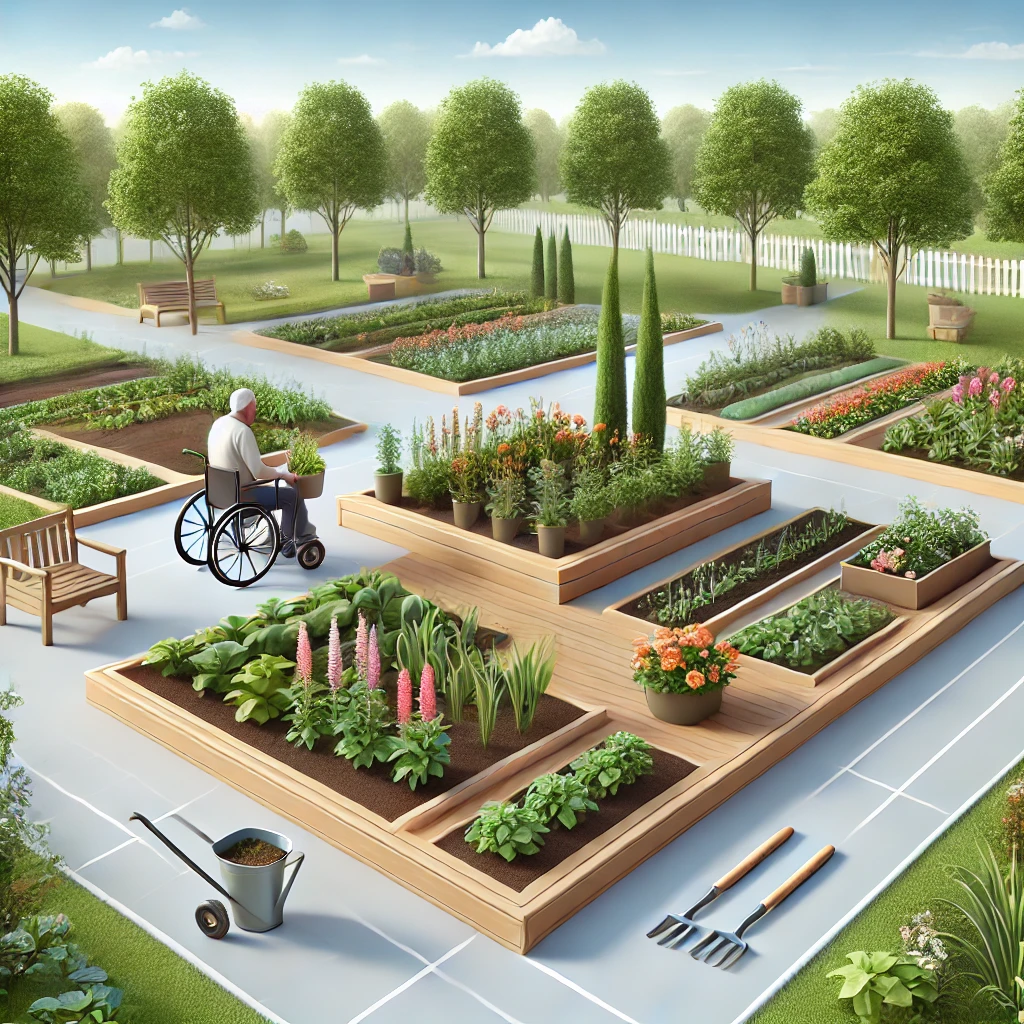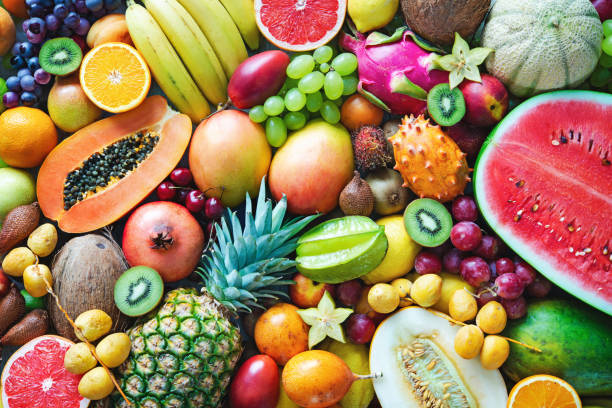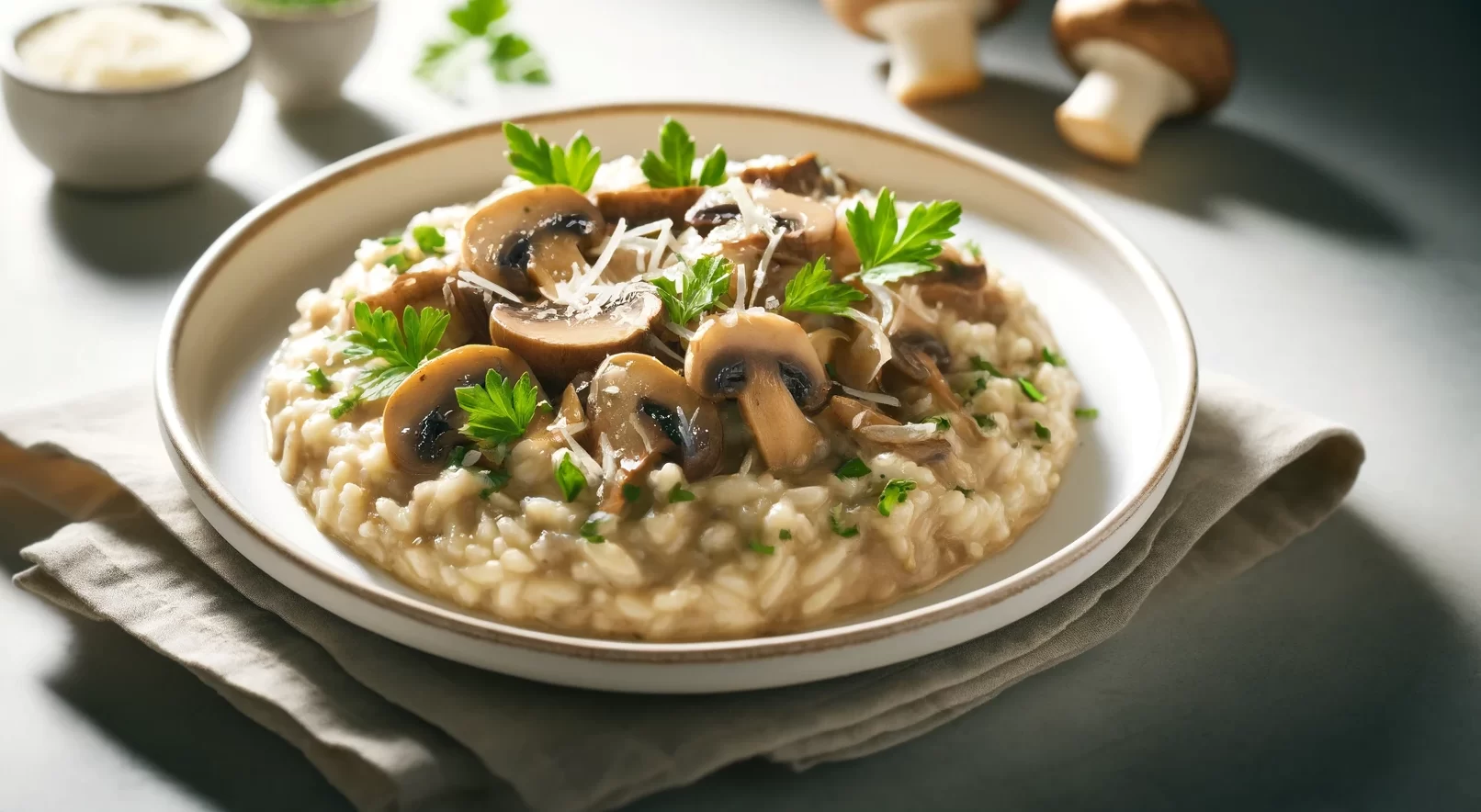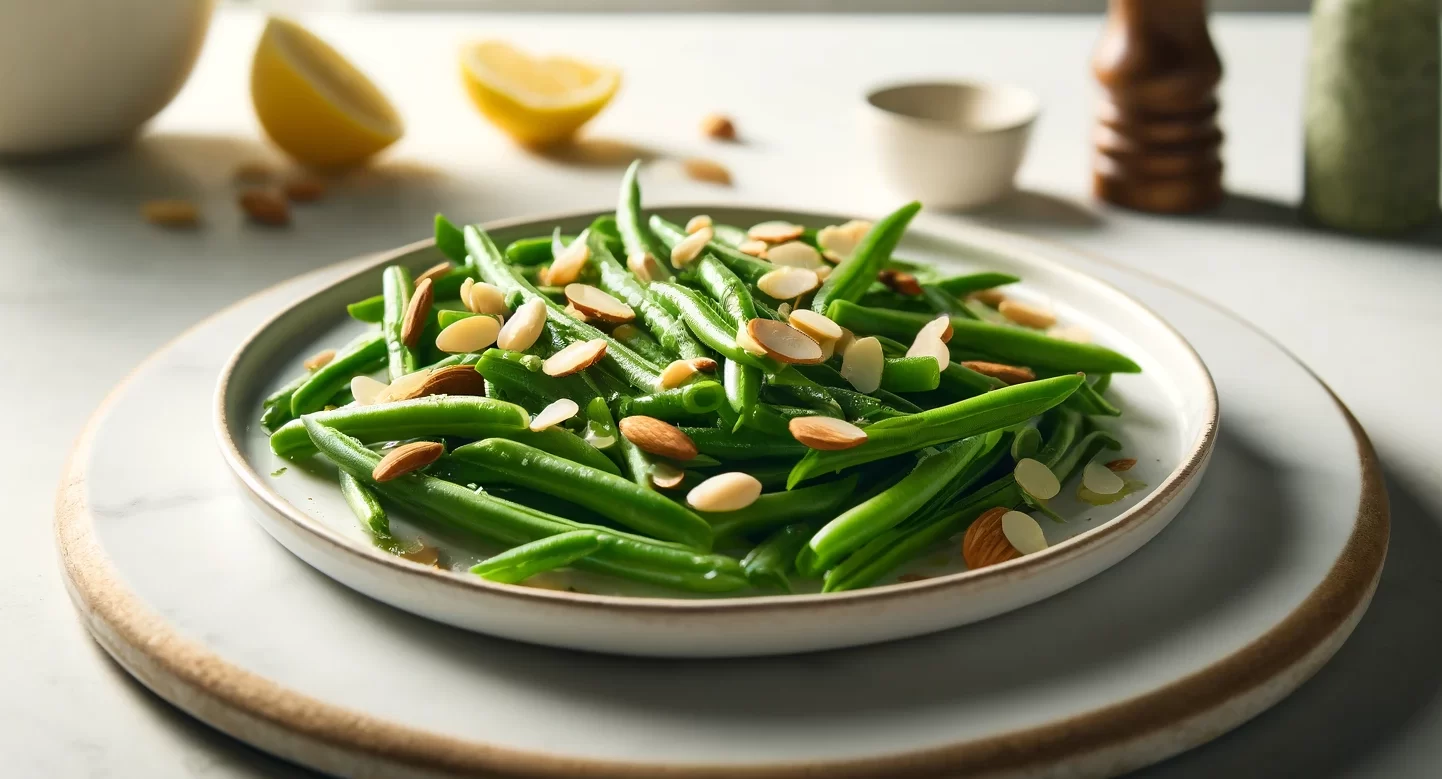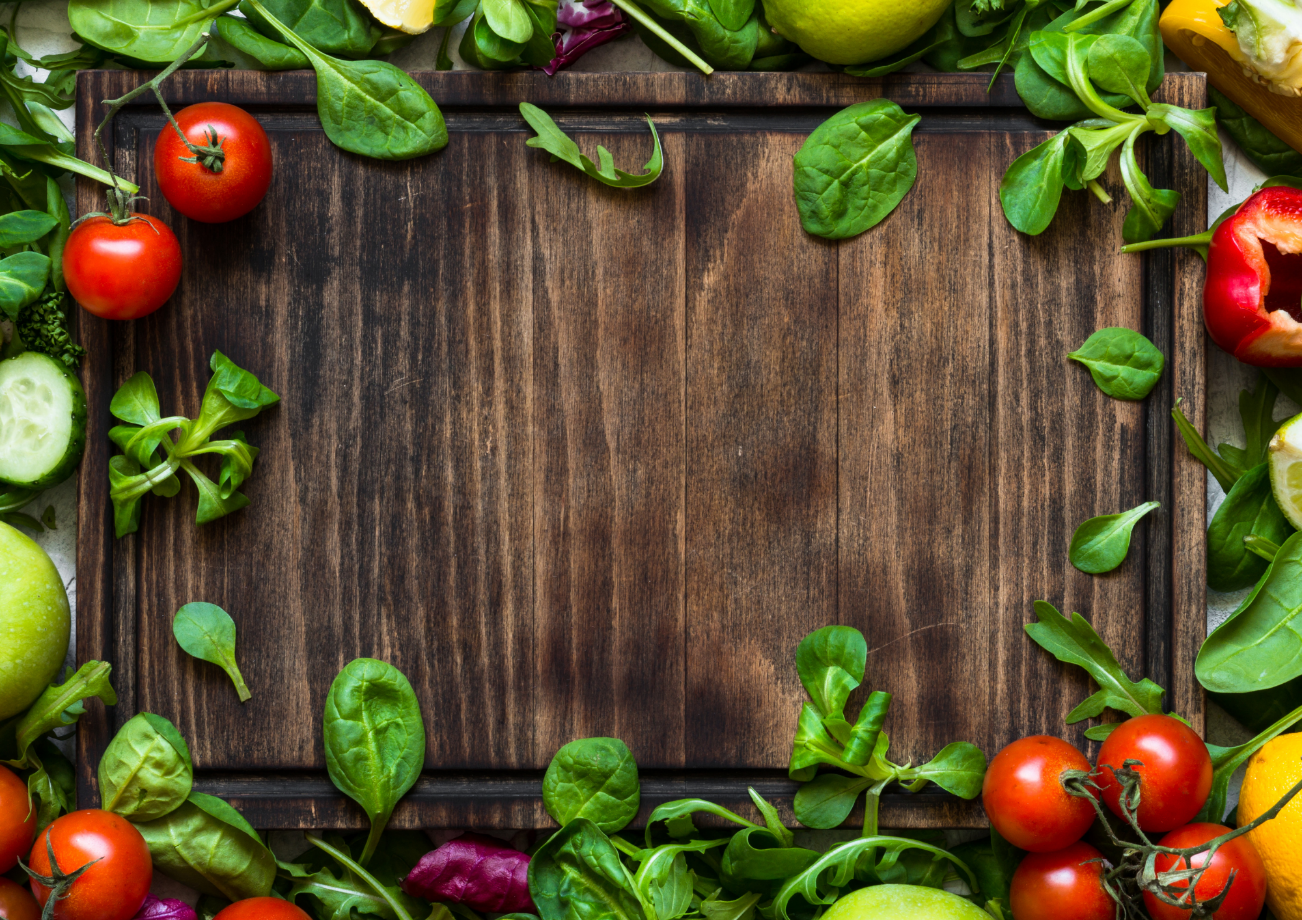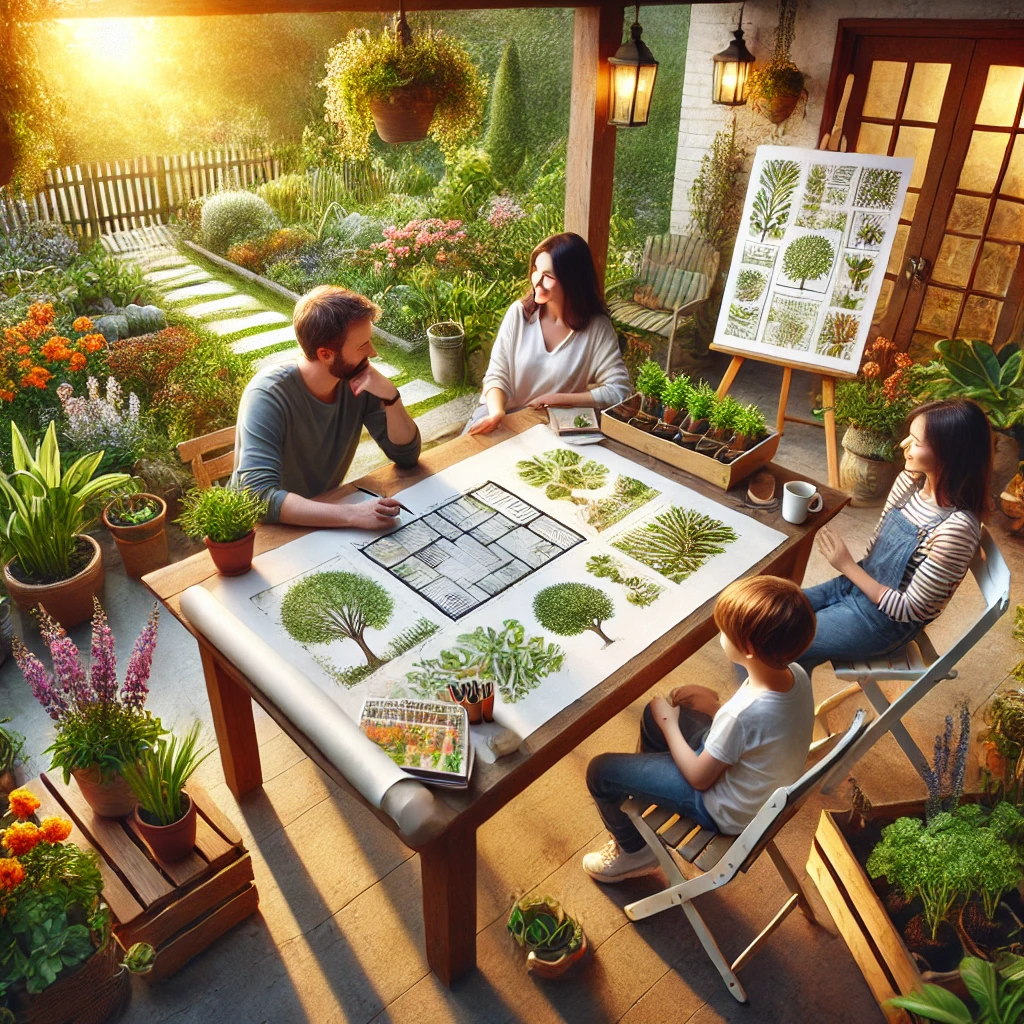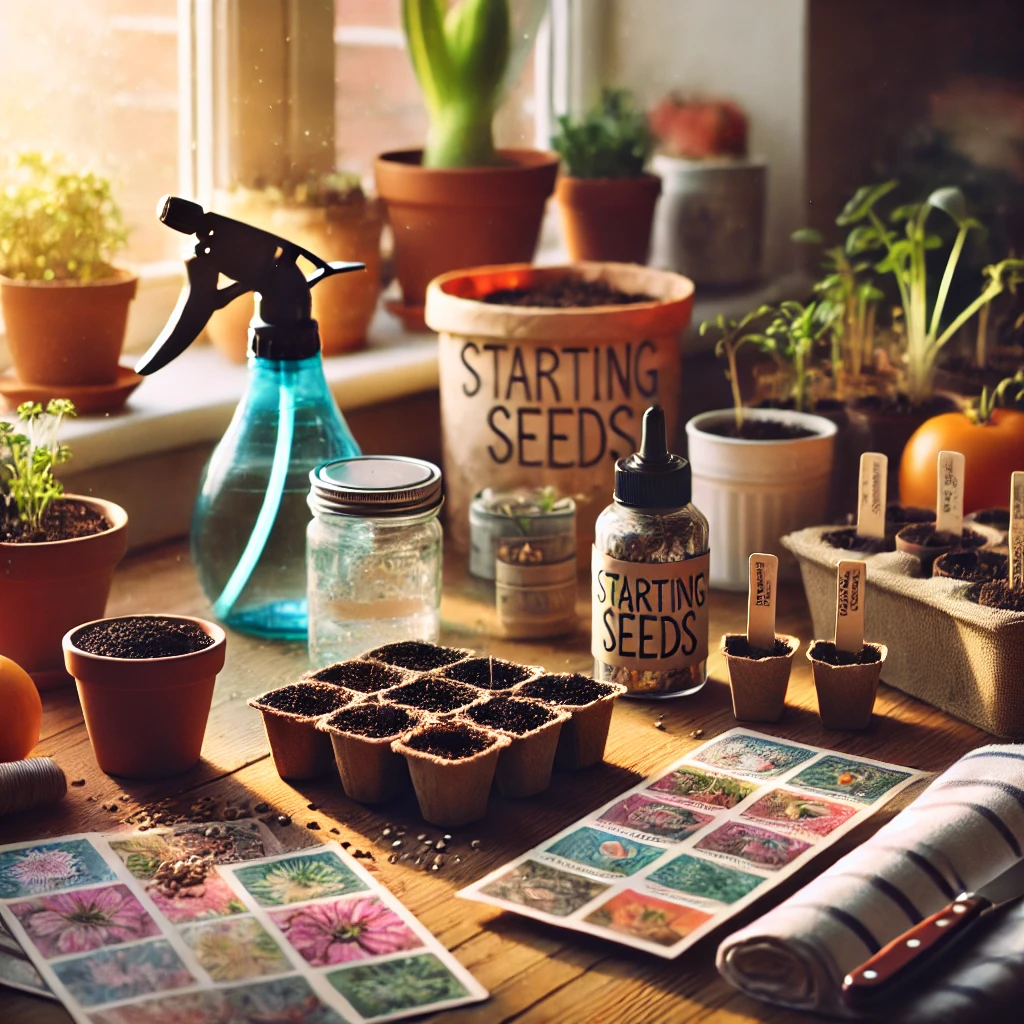In the lush landscape of sustainable gardening practices, aquaponics emerges as a symphony of harmony between aquaculture (raising fish) and hydroponics (soil-less plant growing). This innovative system creates a closed-loop ecosystem where fish and plants thrive together, offering a beacon of sustainability in our quest for environmentally responsible food production. As a passionate advocate for sustainable living and a green-thumbed enthusiast, I’ve been captivated by the potential of aquaponics. It’s not just a method of gardening; it’s a step towards a greener future, promising efficiency, sustainability, and a deep connection with the cycles of nature. I would also like to include a mention of Reparation Earth in Green Cove Springs, Fl. I would like to encourage local residents to visit their farm. The McCarthy’s are a super friendly and helpful couple. The wife and I really enjoyed bringing our daughters there, and we are sure you will enjoy them as well. Click here to visit Reparation Earth.
The Essence of Aquaponics: A Cycle of Life
Aquaponics embodies a beautiful cycle of life, a self-sustaining ecosystem where fish and plants coexist in a harmonious relationship, each benefiting from the other in a continuous loop of growth and renewal. This innovative system captures the essence of nature’s interconnectedness, showcasing how different life forms can support one another in a closed environment. At its core, aquaponics merges aquaculture, the practice of raising fish, with hydroponics, the cultivation of plants in water, creating a symbiotic habitat that mimics natural aquatic ecosystems.
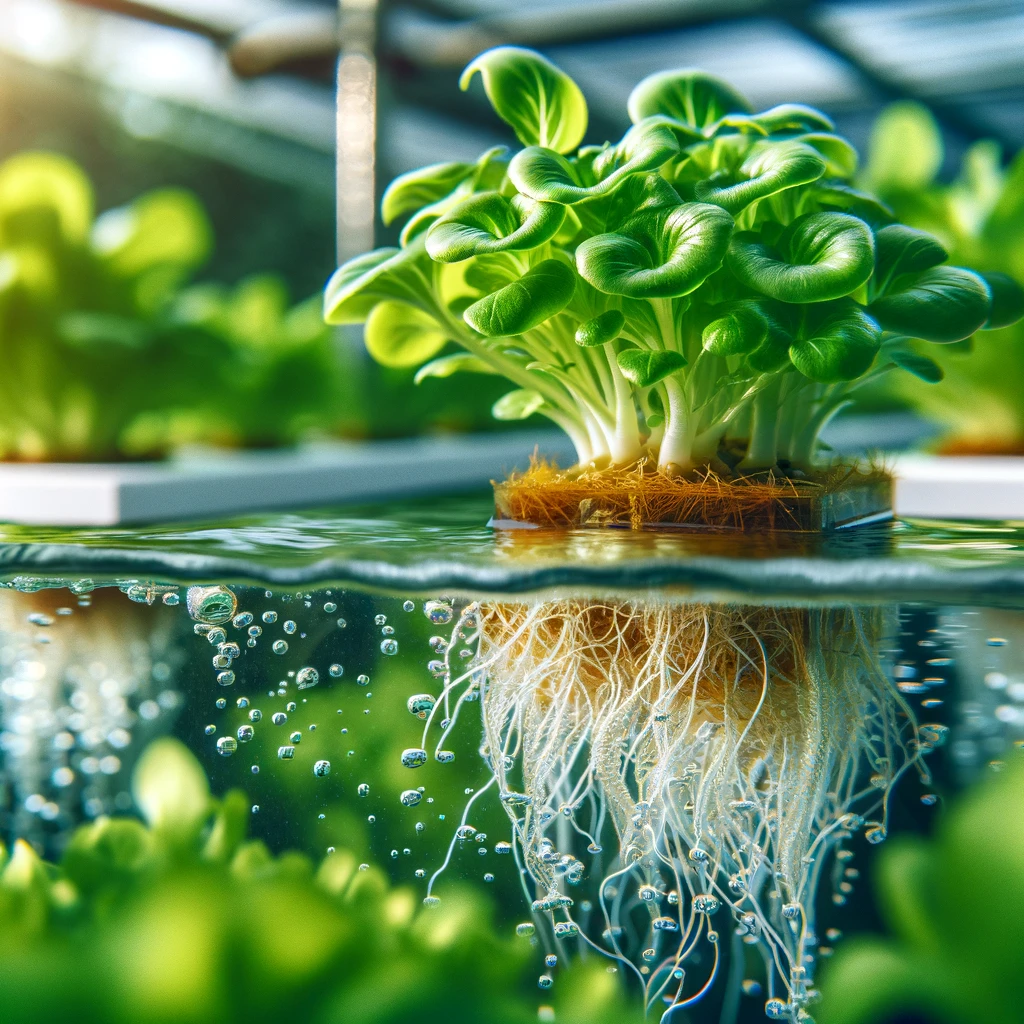
In this cycle, fish play a crucial role by providing the organic nutrients plants need to thrive. As fish consume their food, they produce waste, which, although toxic to the fish if allowed to accumulate, is rich in nitrogen—a key nutrient for plant growth. Beneficial bacteria within the system then convert this waste into nitrates, a form of nitrogen that plants can absorb and utilize. As plants uptake these nitrates, they effectively cleanse the water, which is then recirculated back to the fish tank, creating a clean, healthy environment for the fish to grow.
This cycle of life in aquaponics is a testament to the efficiency and sustainability of nature’s processes. It eliminates the need for synthetic fertilizers, as the fish provide all the necessary nutrients naturally. Moreover, the system conserves water by recycling it through the fish tank and grow beds, using up to 90% less water than traditional soil-based gardening. Aquaponics not only demonstrates a practical application of ecological balance but also serves as a model for sustainable food production, offering a glimpse into how we can harmonize with nature to grow food more responsibly and efficiently.
The Roots of Aquaponics: Why Dive Into This Sustainable System?
Diving into aquaponics is embracing a future where sustainability, efficiency, and innovation converge in our backyards and urban farms. This system, a blend of aquaculture and hydroponics, stands as a testament to the power of combining traditional agricultural practices with modern technology to address some of today’s most pressing environmental challenges. The allure of aquaponics lies in its multitude of benefits, making it an increasingly popular choice for gardeners, farmers, and eco-conscious individuals.
Firstly, aquaponics is a champion of water conservation. In an era where water scarcity is becoming a global concern, the system’s ability to recycle water within its closed loop offers a solution that drastically reduces consumption. Compared to conventional gardening, aquaponics uses up to 90% less water, a significant advantage in drought-prone regions or for those aiming to minimize their ecological footprint.
Additionally, aquaponics eliminates the need for chemical fertilizers, creating an organic ecosystem where fish waste provides all the necessary nutrients for plant growth. This natural fertilization process not only ensures healthier, more sustainable produce but also protects local waterways from agricultural runoff, a common issue with soil-based farming.
Another compelling reason to adopt aquaponics is its space efficiency. The system allows for vertical farming techniques, maximizing yield in limited spaces—an ideal solution for urban environments where land is scarce. Furthermore, aquaponics offers year-round farming, irrespective of external climate conditions, ensuring a continuous supply of fresh produce and fish.
Embracing aquaponics is more than just adopting a new gardening technique; it’s making a conscious decision to contribute positively to our planet’s future. This system exemplifies how we can work alongside nature to produce food more sustainably, offering a blueprint for the future of agriculture that is both productive and harmonious with the environment.
Setting Up Your Aquaponic Symphony: Getting Started
Setting up your aquaponic garden is akin to orchestrating a symphony, where each component plays a crucial role in creating a harmonious and sustainable ecosystem. To embark on this rewarding journey, a few key steps will lay the foundation for a thriving aquaponic system that can provide fresh produce and fish with minimal environmental impact.
- Choosing the Right System: Your aquaponic adventure begins with selecting a system that aligns with your space, goals, and level of expertise. For beginners, a simple media-based system, where plants grow in a bed of clay pebbles or gravel, is often recommended. This setup is versatile, easy to manage, and suitable for a wide range of plants and small-scale fish farming.
- Finding the Perfect Location: Light, temperature, and accessibility are vital factors to consider when choosing a location for your aquaponic system. An area that receives ample natural light is ideal, though supplemental grow lights can be added for indoor setups. Ensure the space can maintain consistent temperatures favorable to both your chosen plants and fish species.
- Selecting Your Fish and Plants: Balance is key in an aquaponic system. Start with hardy fish like tilapia or goldfish, known for their adaptability and waste production, essential for feeding your plants. Complement these with leafy greens and herbs, which thrive in aquaponic conditions, before experimenting with more demanding crops as you gain confidence.
- Establishing Your System: Install your tanks, grow beds, and plumbing, ensuring a seamless flow between the fish and plant components. An efficient water pump and aeration system are crucial to keep water oxygenated and circulating, mimicking the natural ecosystem.
- Monitoring and Maintenance: Regularly check water quality parameters such as pH, ammonia, nitrites, and nitrates to ensure a healthy environment for both fish and plants. Establish a routine for feeding your fish and inspecting your system to address any issues promptly.
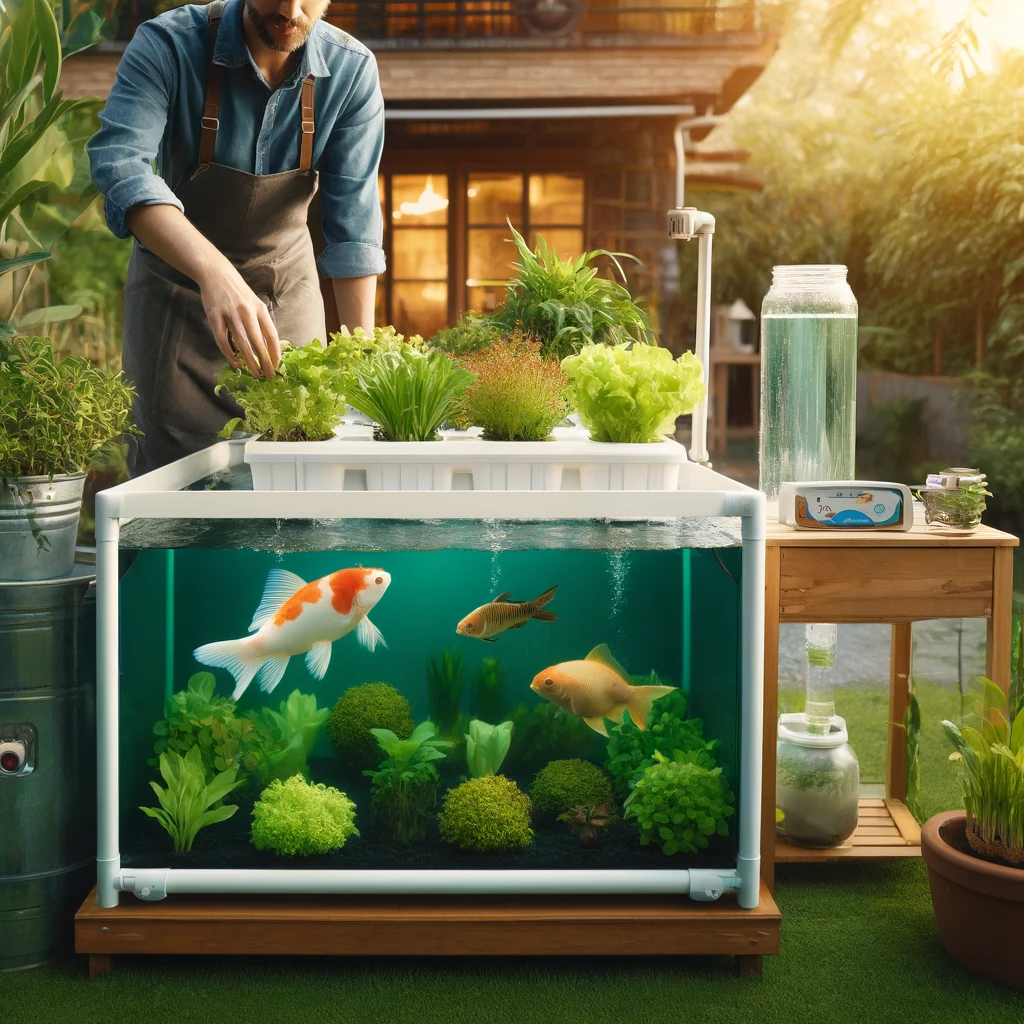
By carefully orchestrating these elements, you can create an aquaponic symphony that is not only a source of sustenance but also a living example of sustainable agriculture in action.
Let There Be Light: Ensuring Your Plants Thrive
In the world of aquaponics, where water and nutrients flow in a harmonious cycle between fish and plants, ensuring your plants thrive requires one more critical element: light. Light fuels photosynthesis, the fundamental process through which plants convert light energy into chemical energy, sustaining their growth and development. In aquaponic systems, particularly those situated indoors or in areas with limited natural sunlight, providing adequate lighting is essential for mimicking the full spectrum of natural light that plants need.
LED grow lights have become the beacon for aquaponic gardeners, offering a spectrum of light that encompasses both the blue and red wavelengths crucial for plant growth. These lights are energy-efficient, emit minimal heat, and can be adjusted to cater to the specific light requirements of various plants at different stages of growth. Blue light promotes vegetative growth, ideal for leafy greens and herbs, while red light is essential for flowering and fruit production, perfect for tomatoes, peppers, and other fruiting plants.
Positioning your grow lights correctly is paramount to ensure even light distribution across all plants. Lights should be placed overhead and adjusted to the appropriate height as plants grow, typically maintaining a distance that prevents heat stress yet provides sufficient light intensity. Utilizing reflective surfaces around your grow beds can also enhance light efficiency, ensuring no photon goes to waste.
Moreover, timing plays a crucial role. Mimicking natural daylight cycles by providing 14 to 16 hours of light followed by a period of darkness encourages healthy plant cycles. Automated timers can help regulate these light cycles, ensuring consistency and removing the need for manual intervention.
By illuminating your aquaponic garden with the right light, you not only ensure your plants have the energy to thrive but also maximize the productivity and efficiency of your aquaponic system, bringing the vibrant vitality of nature into your home.
The Ripple Effect: The Environmental Impact of Aquaponics
The environmental impact of aquaponics ripples far beyond the confines of its closed-loop system, offering a sustainable and ecologically responsible approach to food production. As the world grapples with the challenges of climate change, water scarcity, and land degradation, aquaponics emerges as a beacon of environmental stewardship, showcasing how innovative agricultural practices can help mitigate these global issues.
One of the most significant environmental benefits of aquaponics is its remarkable water efficiency. By recirculating water between fish tanks and plant grow beds, aquaponics uses up to 90% less water than traditional soil-based agriculture. This conservation is crucial in a world where freshwater
resources are increasingly scarce and the agricultural sector is a major consumer of water. Aquaponics provides a viable solution for producing food in water-limited environments, demonstrating that sustainable agriculture and water conservation can go hand in hand.
Moreover, aquaponics eliminates the need for chemical fertilizers and pesticides, which are often associated with soil-based farming. The nutrient-rich water from fish waste provides a natural fertilizer for the plants, reducing the reliance on synthetic inputs that can leach into and pollute natural water bodies. This not only protects local ecosystems but also promotes the production of clean, organic food.
The system’s ability to be implemented in diverse settings, from urban rooftops to arid landscapes, highlights its potential to reduce the carbon footprint associated with food transportation. By bringing food production closer to consumers, aquaponics can help lower greenhouse gas emissions and contribute to a more sustainable food system.
Furthermore, aquaponics offers a solution to land degradation by reducing the need for arable land in food production. This soil-less farming method can help preserve natural habitats and biodiversity, supporting ecological balance.
The environmental impact of aquaponics, characterized by water conservation, reduction of chemical use, carbon footprint minimization, and land preservation, underscores its role in advancing sustainable agriculture. As this innovative farming practice continues to evolve, its ripple effect on the environment promises not only to sustain but also to rejuvenate our planet, paving the way for a more sustainable and resilient food system.
Harvesting the Future: The Potential of Aquaponics
Aquaponics stands at the forefront of agricultural innovation, embodying a sustainable fusion of fish farming and hydroponics that could redefine our approach to food production in the future. Its potential to revolutionize how we grow food is rooted in its inherent sustainability, efficiency, and adaptability. As we face the pressing challenges of climate change, population growth, and the increasing strain on water and land resources, aquaponics offers a glimpse into a sustainable path forward.
One of the most compelling aspects of aquaponics is its remarkable water efficiency. Utilizing up to 90% less water than traditional agriculture, aquaponics presents a viable solution for growing food in areas plagued by water scarcity. This conservation is critical as we navigate the realities of diminishing freshwater supplies, ensuring that we can produce abundant food without depleting our precious water resources.
Furthermore, aquaponics eliminates the need for arable land, opening up new possibilities for food production in urban environments and regions with poor soil quality. By bringing farms into the city, aquaponics reduces the carbon footprint associated with transporting food over long distances, contributing to a more sustainable and resilient local food system.
The potential of aquaponics also lies in its ability to provide year-round food production, regardless of external climate conditions. This controlled environment agriculture enables the cultivation of fresh fruits, vegetables, and fish, ensuring a consistent supply of nutritious food. Such reliability and efficiency could play a crucial role in addressing food security challenges, particularly in vulnerable communities around the world.
Aquaponics not only symbolizes a shift towards more eco-friendly farming practices but also highlights the potential for technological and ecological harmony. As we explore the depths of its possibilities, aquaponics could very well harvest a future where sustainability, food security, and environmental responsibility converge, offering a promising blueprint for the next generation of agriculture.
As we stand at the intersection of sustainability and innovation, aquaponics shines as a beacon of hope for the future of agriculture. This symbiotic system, where fish and plants grow together in harmony, offers more than just an alternative method of cultivation—it presents a vision for a world where food production aligns with ecological stewardship. The journey through the principles and practices of aquaponics reveals not just the mechanics of a sustainable agricultural system but also the potential for a profound transformation in our relationship with food and the environment.
Aquaponics embodies the principles of water conservation, efficient land use, and the elimination of chemical inputs, showcasing a path to agriculture that nourishes both people and the planet. Its adaptability, from small-scale home systems to large commercial operations, underscores the versatility and scalability that make aquaponics a viable solution for diverse contexts and challenges. By harnessing the symbiotic relationships inherent in nature, aquaponics offers a model for food production that is not only sustainable but also regenerative.
As we look to the future, the potential of aquaponics extends beyond the boundaries of agriculture, touching on issues of urban sustainability, climate change resilience, and global food security. It challenges us to rethink conventional farming practices and to embrace a more integrated, ecological approach to growing food. The journey into aquaponics is not just about cultivating plants and fish; it’s about harvesting a future where human ingenuity and nature’s wisdom coalesce to create a more sustainable, abundant world.
For those inspired to delve deeper into the world of aquaponics or to embark on their own aquaponic adventure, the journey promises not only the joy of gardening but also the satisfaction of contributing to a more sustainable and food-secure future. Let’s continue to explore, innovate, and grow together, nurturing not just gardens but a vision for a greener, more harmonious world.
If you’re inspired to explore the sustainable world of aquaponics further or seek guidance on creating your own system, consider joining our community. Sign up for our newsletter for insights, tips, and stories that celebrate the intersection of gardening, sustainability, and innovation. Together, let’s dive into the harmonious world of aquaponics, cultivating not just food but a greener, more sustainable future for all.


